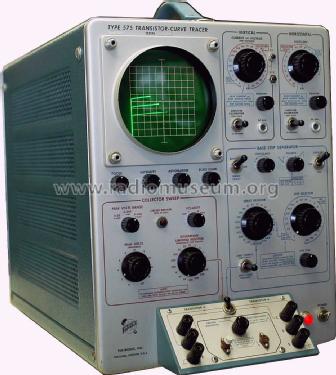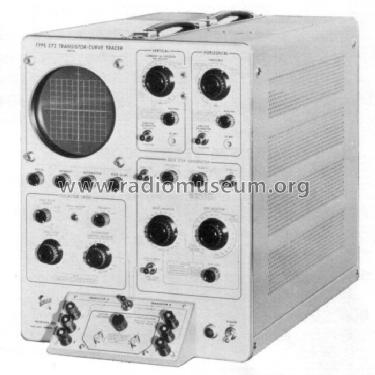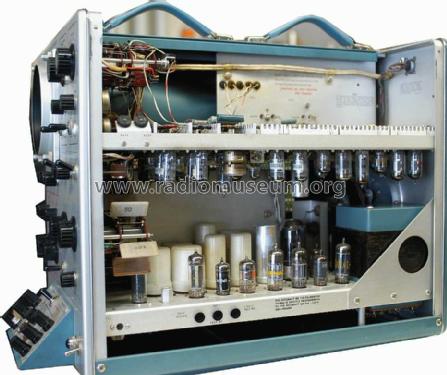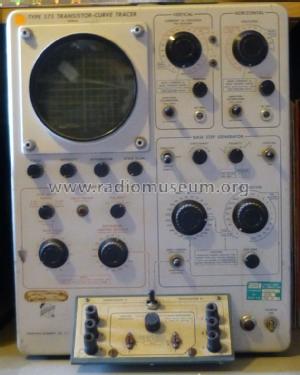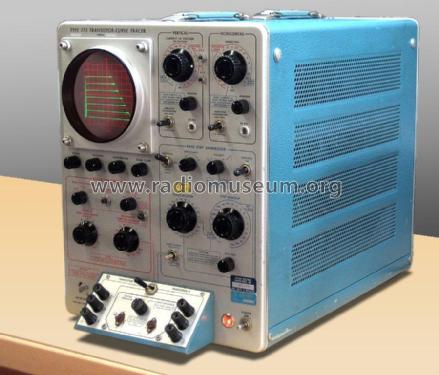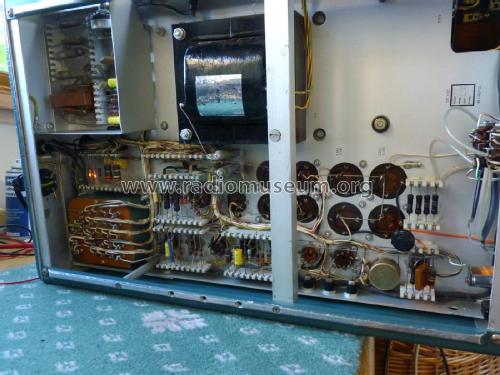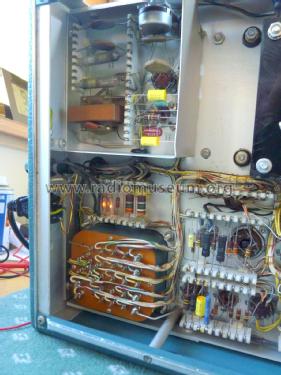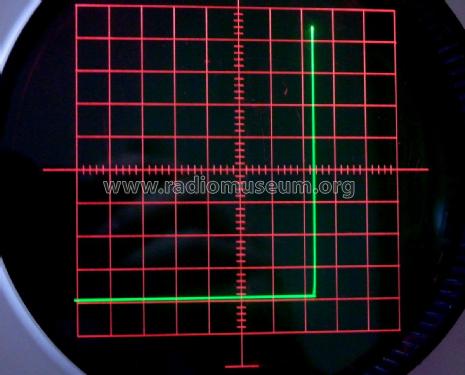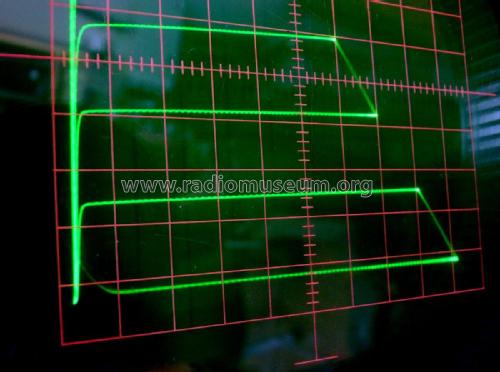Transistor Curve Tracer 575
Tektronix; Portland, OR
- Land
- USA
- Hersteller / Marke
- Tektronix; Portland, OR
- Jahr
- 1957–1971
- Kategorie
- Service- oder Labor-Ausrüstung
- Radiomuseum.org ID
- 116198
- Anzahl Röhren
- 39
- Anzahl Transistoren
- 2
- Halbleiter
- Wellenbereiche
- - ohne
- Betriebsart / Volt
- Wechselstromspeisung / 105-250 Volt
- Lautsprecher
- - Für Kopfhörer oder NF-Verstärker
- Material
- Metallausführung
- von Radiomuseum.org
- Modell: Transistor Curve Tracer 575 - Tektronix; Portland, OR
- Form
- Tischmodell, Zusatz nicht bekannt - allgemein.
- Abmessungen (BHT)
- 13 x 16.7 x 24 inch / 330 x 424 x 610 mm
- Bemerkung
- The 575 Transistor Characteristic Curve Tracer to plot NPN, PNP and diode curves, simulating true operating conditions. Collector supply up to 10 A at 20 V and up to 1 A at 200 V. Base current up to 2.4 A. There is a companion 175 high current unit. There may be multiples of the valves listed. The CRT is not includedin the tube list.
- Nettogewicht
- 32 kg / 70 lb 7.8 oz (70.485 lb)
- Originalpreis
- 975.00 $
- Literaturnachweis
- - - Manufacturers Literature
- Literatur/Schema (1)
- Funk-Technik (FT) (11/1959, S. 392 - 395 / Beschreibung)
- Autor
- Modellseite von Emilio Ciardiello angelegt. Siehe bei "Änderungsvorschlag" für weitere Mitarbeit.
- Weitere Modelle
-
Hier finden Sie 386 Modelle, davon 374 mit Bildern und 92 mit Schaltbildern.
Alle gelisteten Radios usw. von Tektronix; Portland, OR
Sammlungen
Das Modell Transistor Curve Tracer befindet sich in den Sammlungen folgender Mitglieder.
Literatur
Das Modell Transistor Curve Tracer ist in der folgenden Literatur dokumentiert.
Forumsbeiträge zum Modell: Tektronix; Portland,: Transistor Curve Tracer 575
Threads: 1 | Posts: 1
When I'd finished the restoration of this magnificent instrument, I noticed what appeared to be a dot-pattern on the trace. This was a mystery, as I didn't recall seeing this when the instrument was first powered.
Extensive investigations yielded nothing: there was no modulation on either the EHT, the grid or the X-plates. However, recalling that the colllector voltage sweep is derived directly from the mains supply (via transformers and an internal variac), I tried addng a 0.47uF X-rated capacitor across the output of the variac (shunt wiper to ground). This largely cured the problem, and confirmed that the noise was mains-derived. Subsequent correspondence with a gentleman in the USA who had exactly the same issue (blog at lazyelectrons.wordpress.com) confirmed the diagnosis; he traced the problem to a modern 9.5W LED lightbulb.
John Sykes, 01.Dec.18
